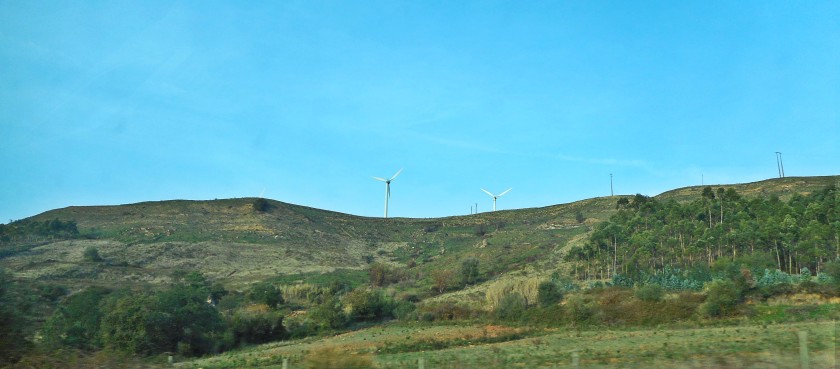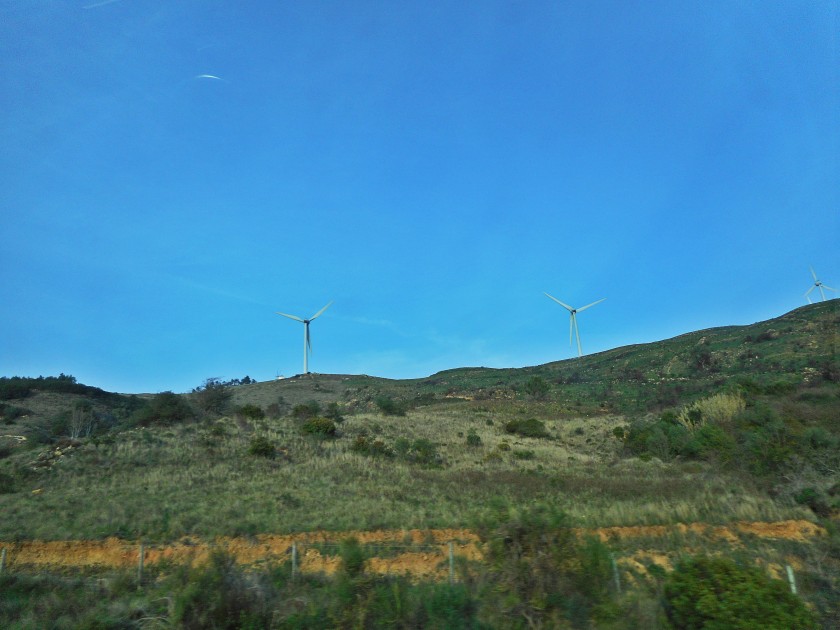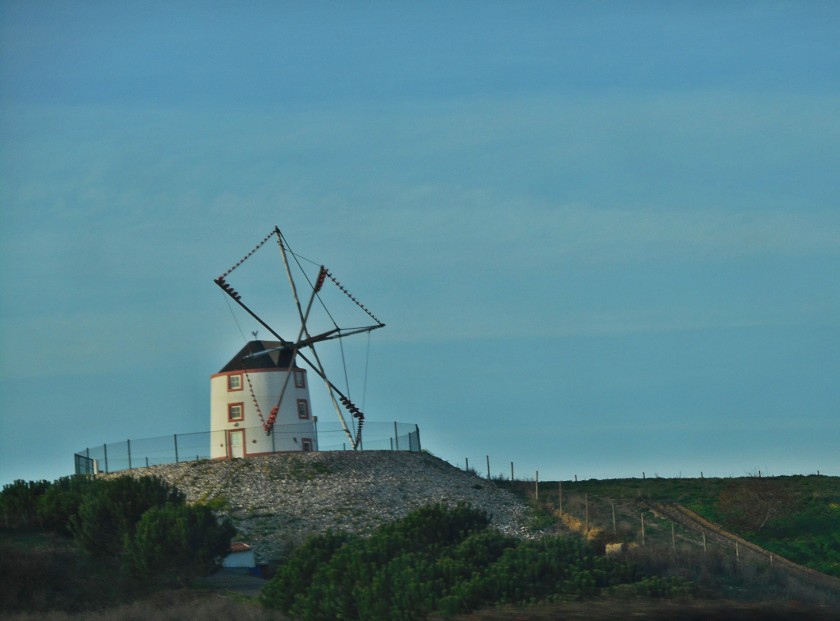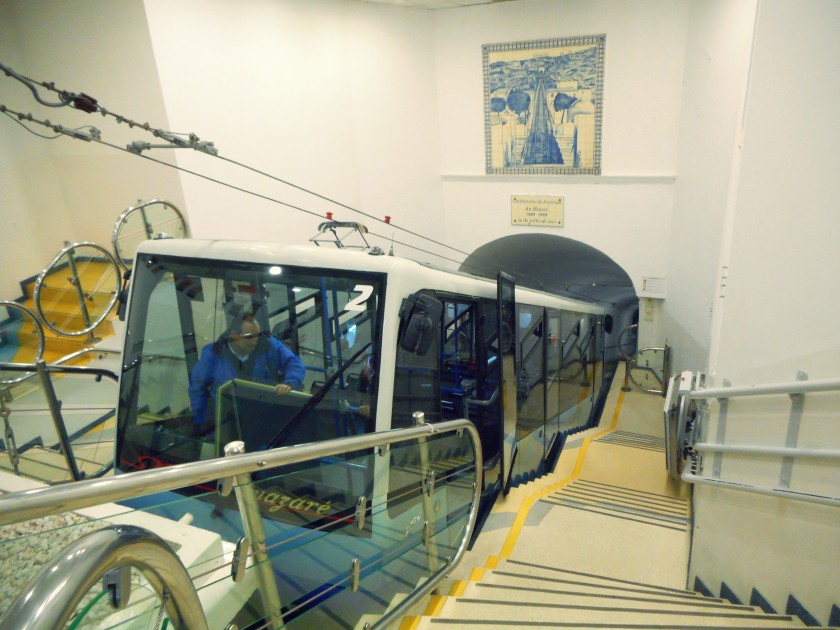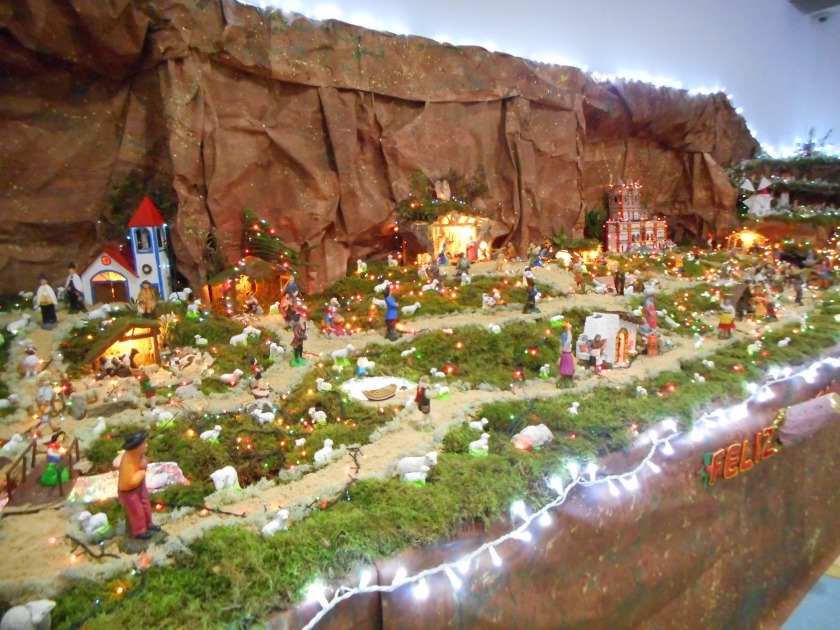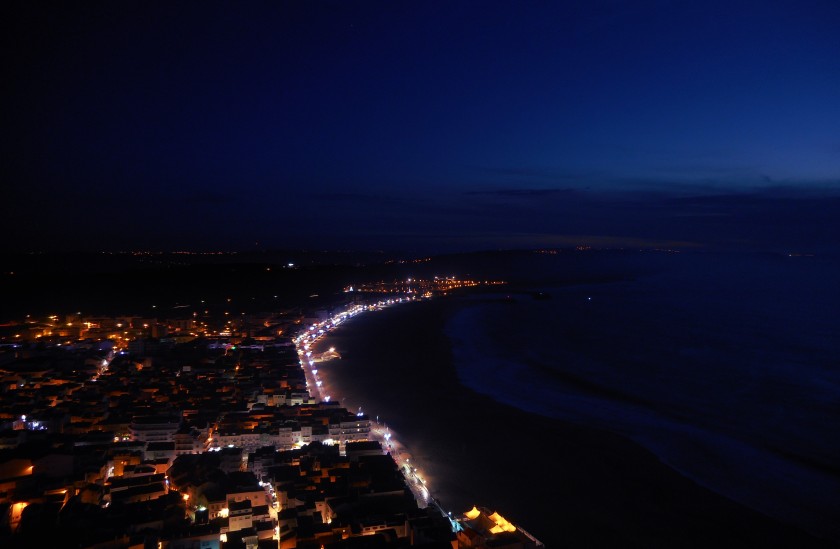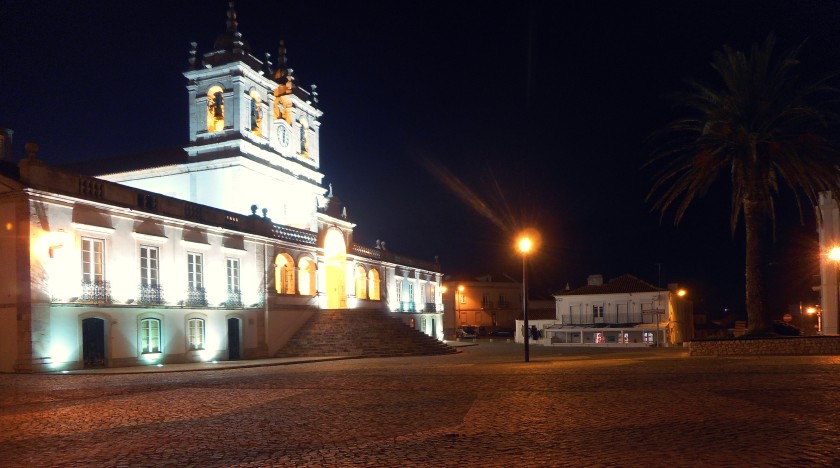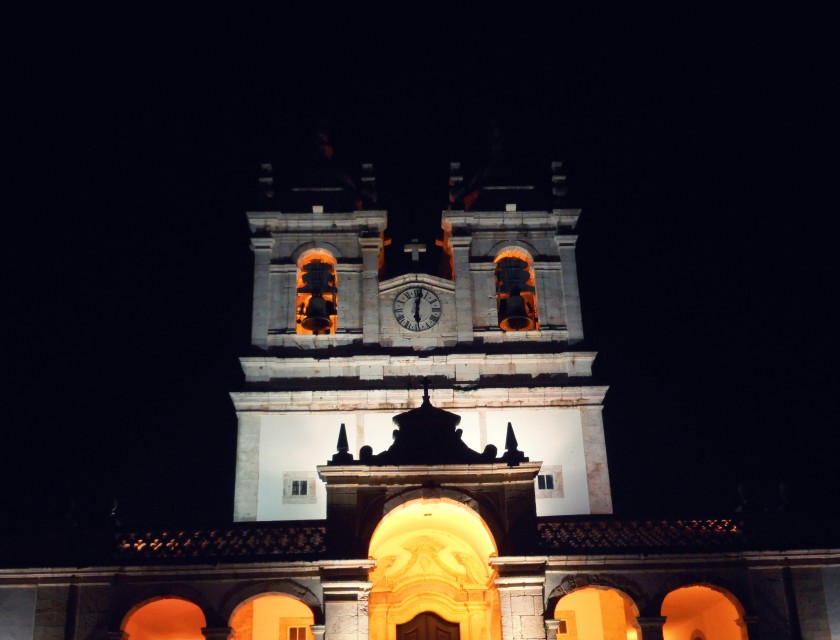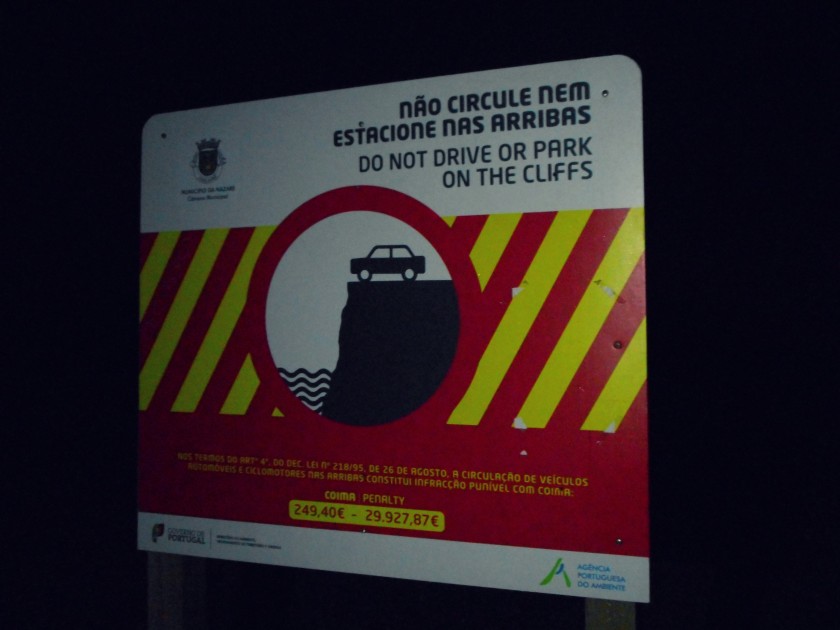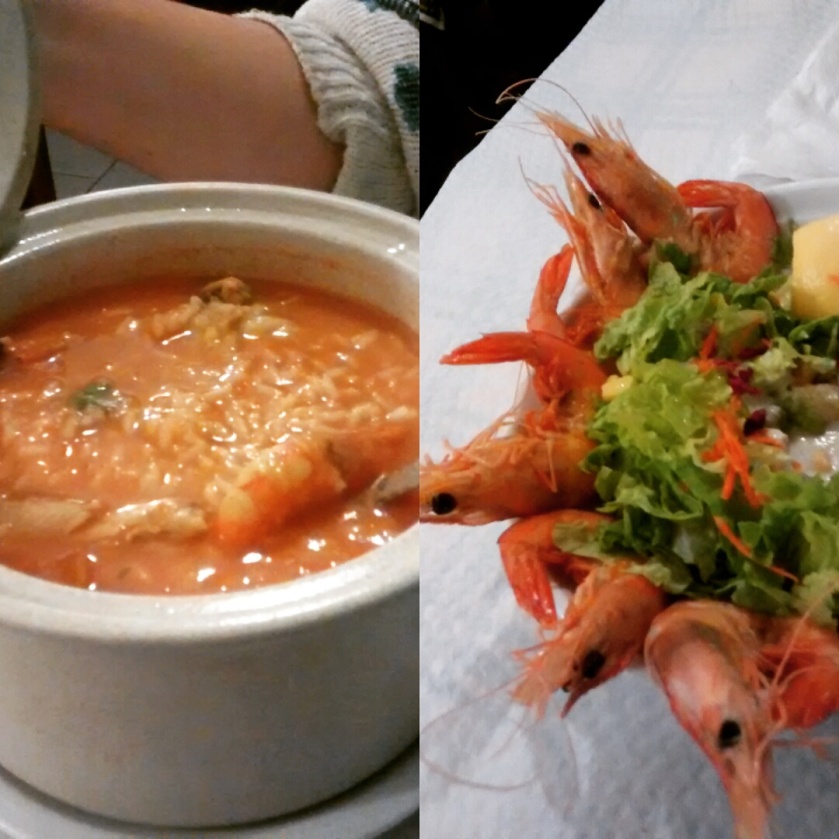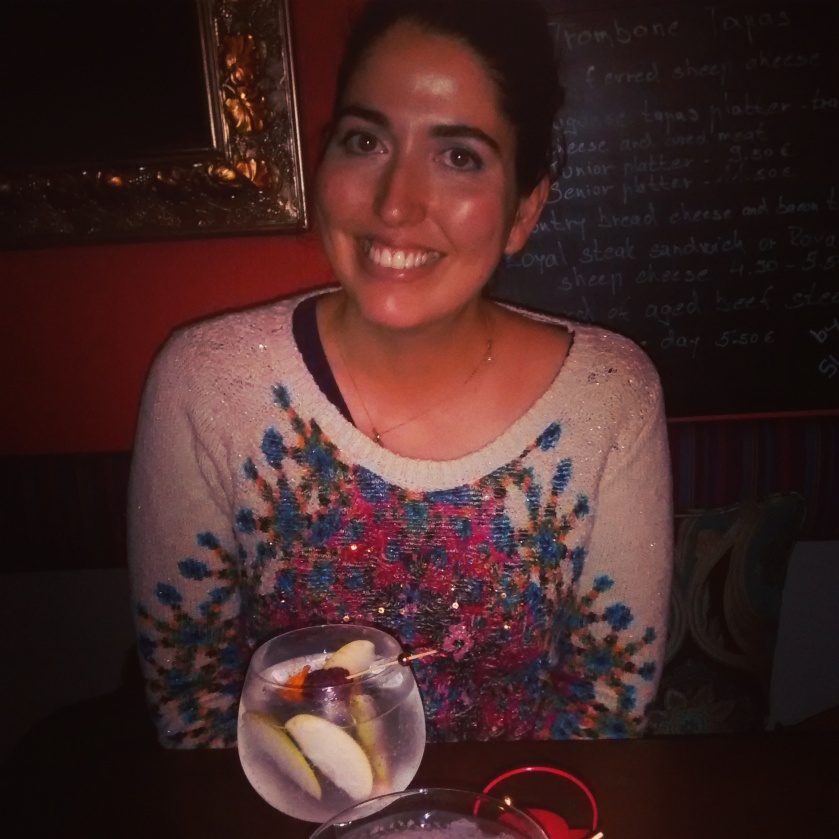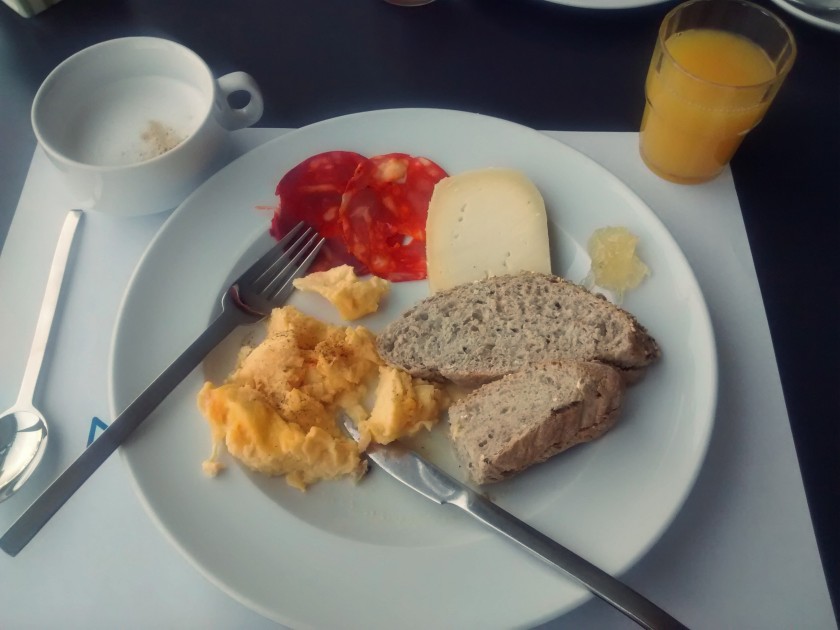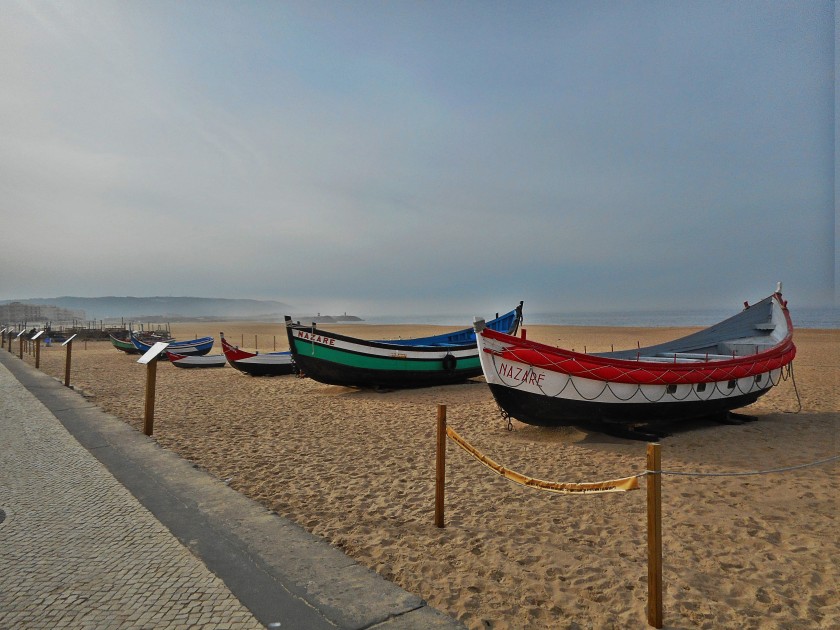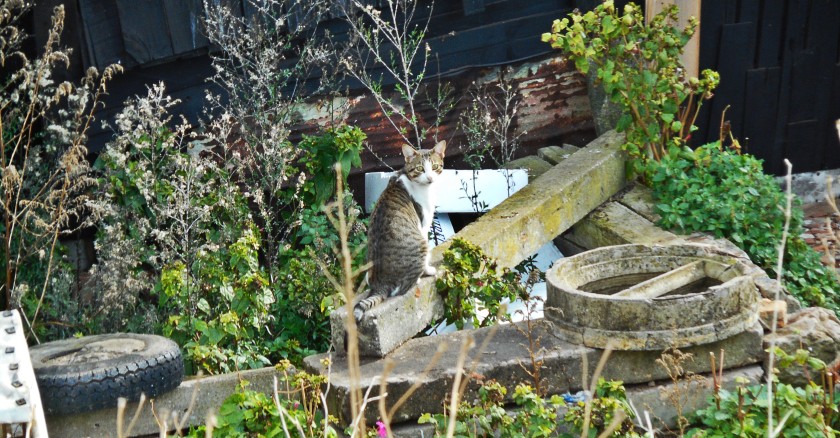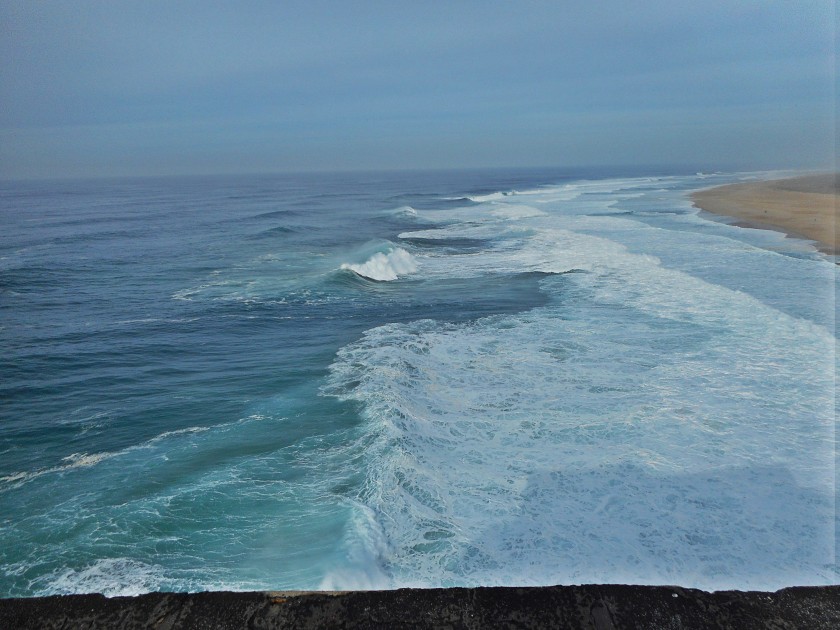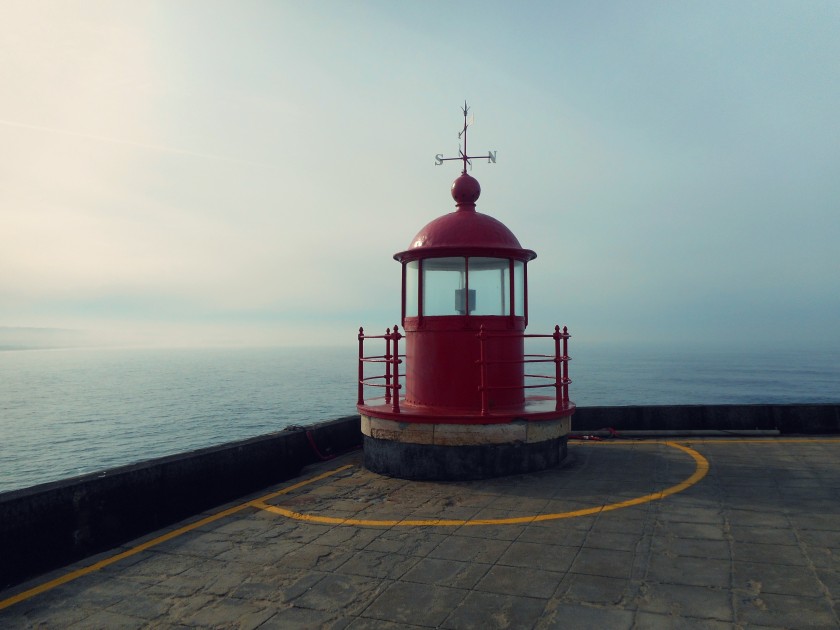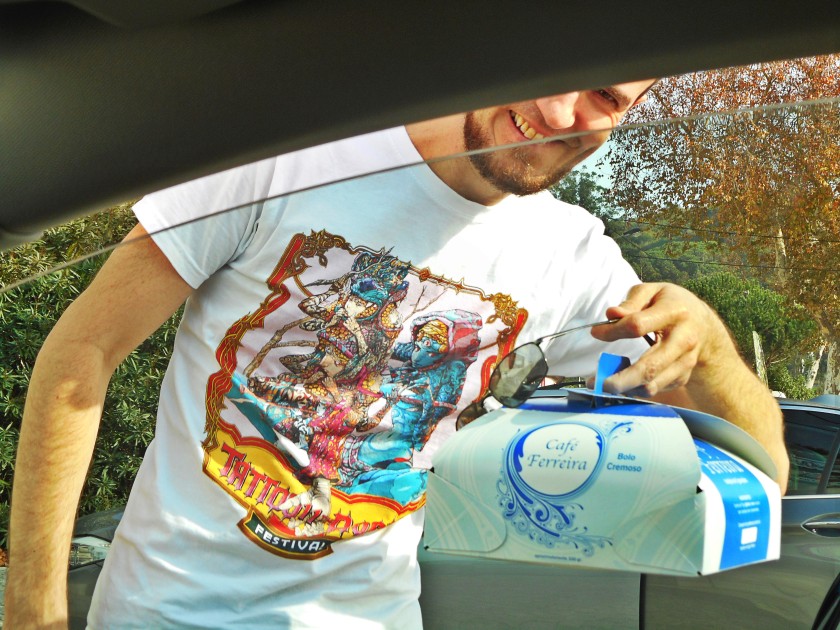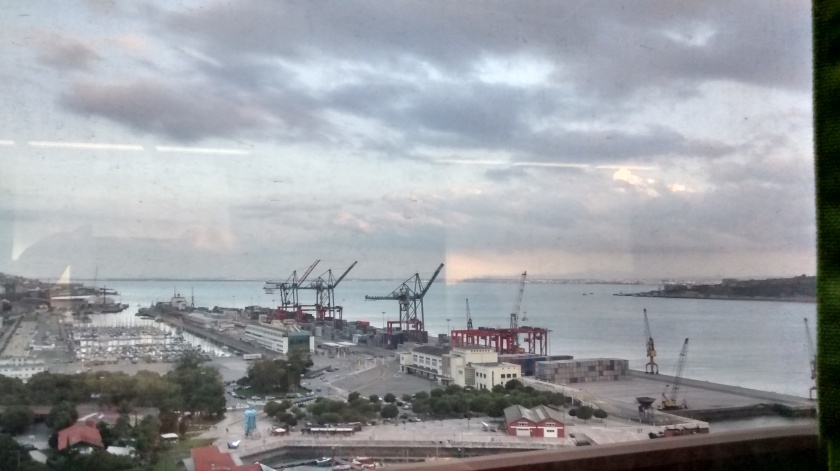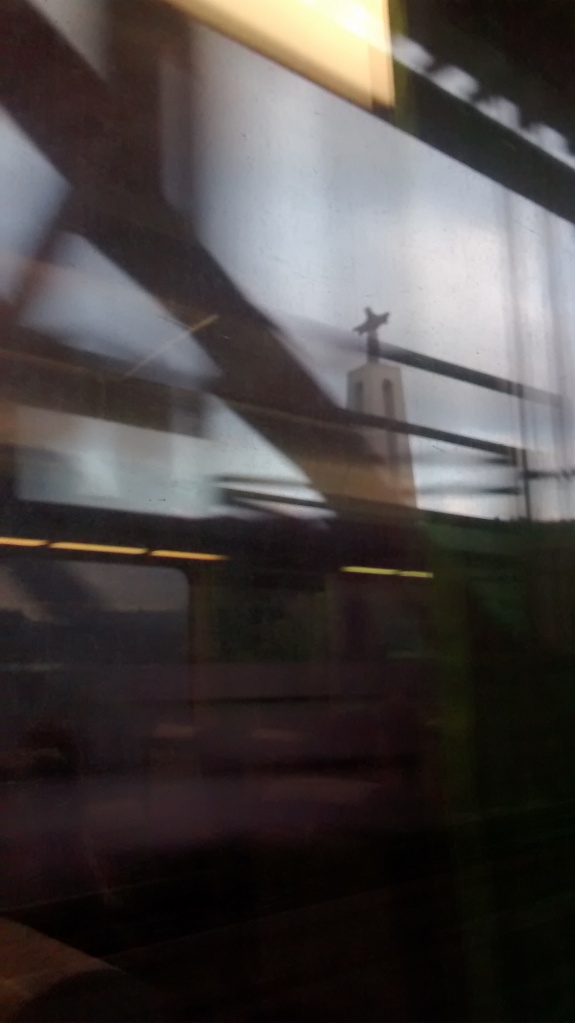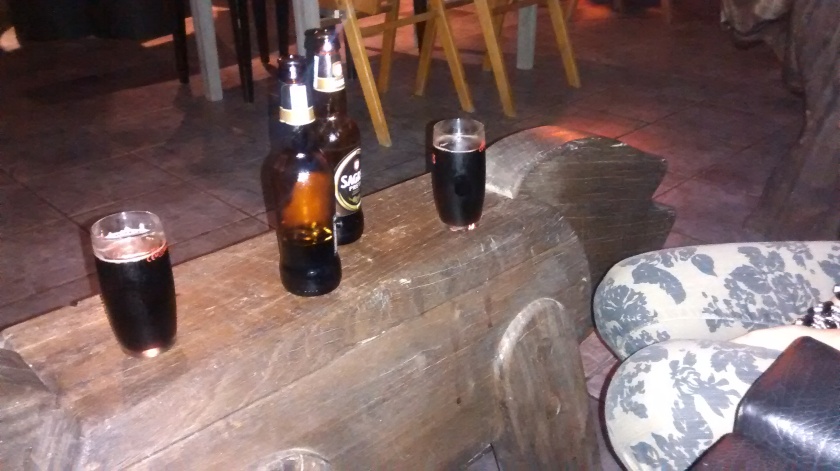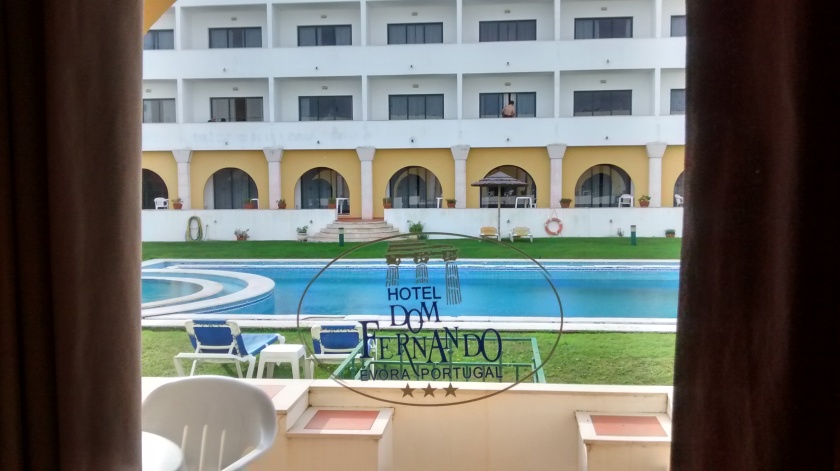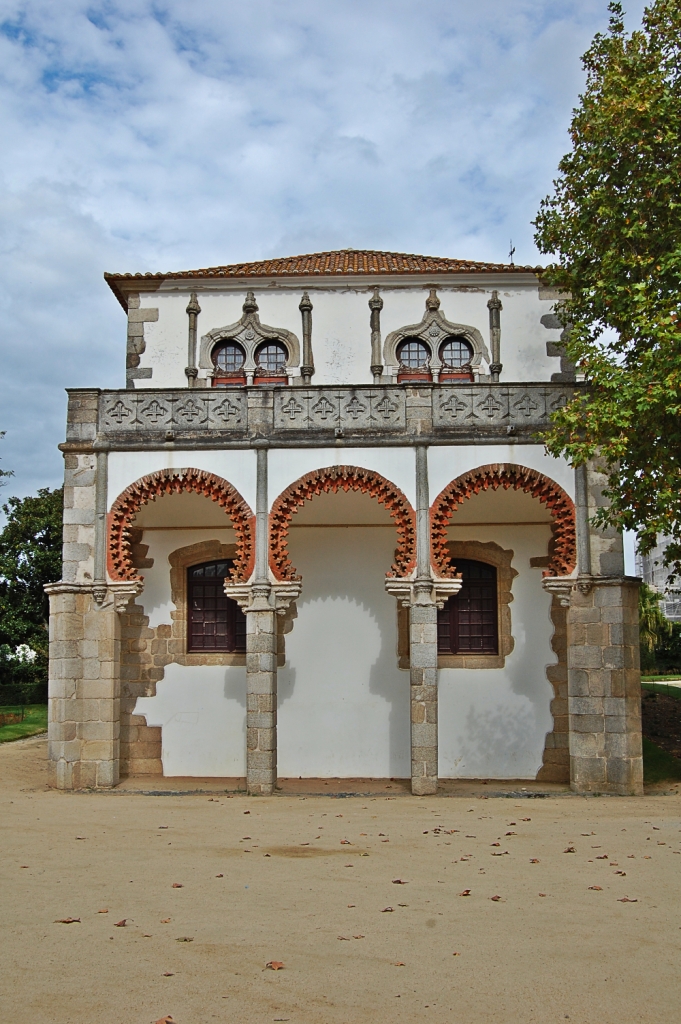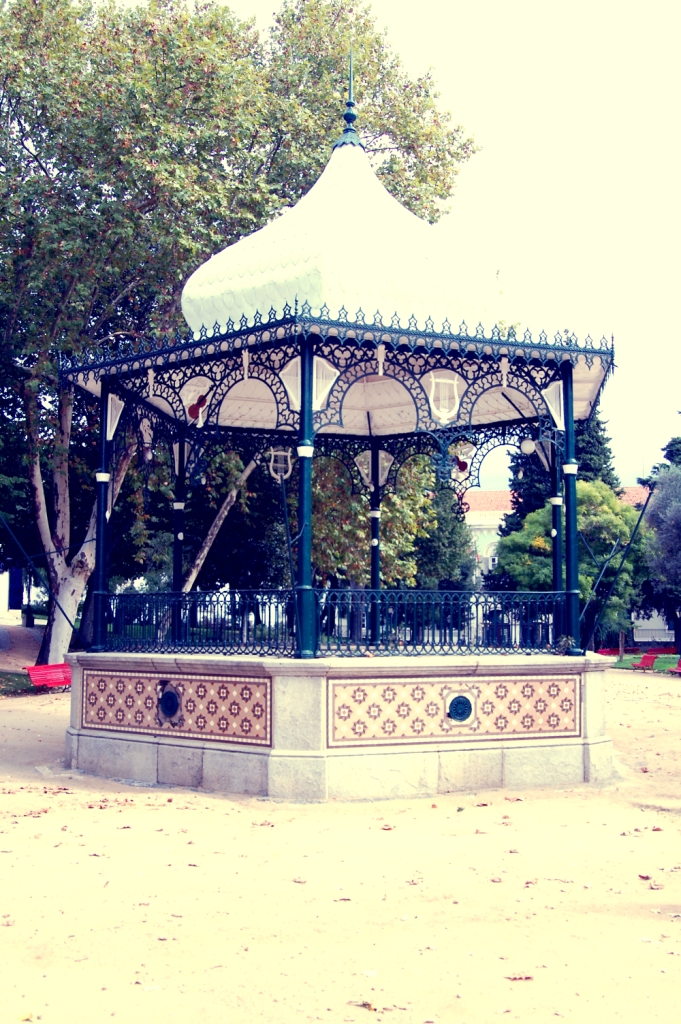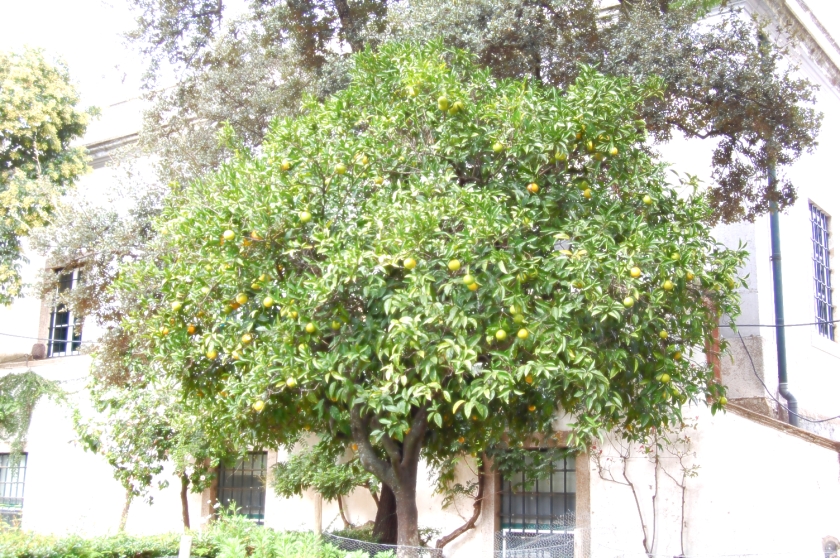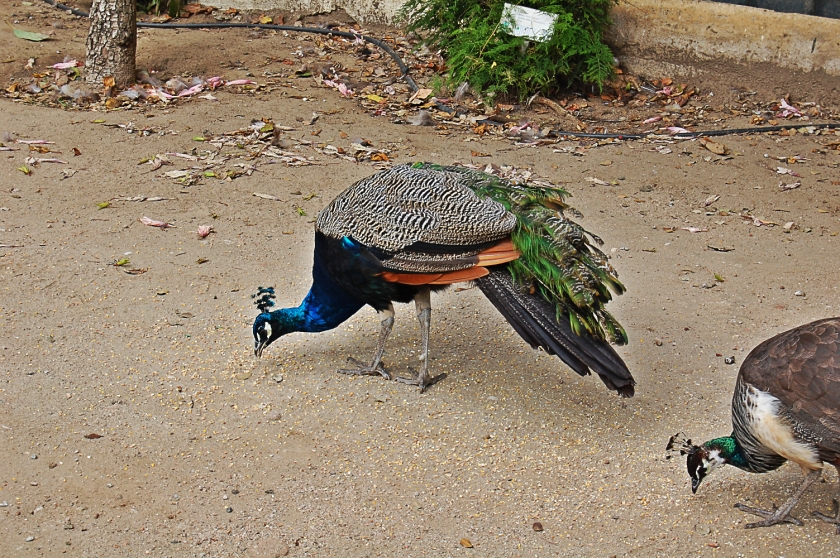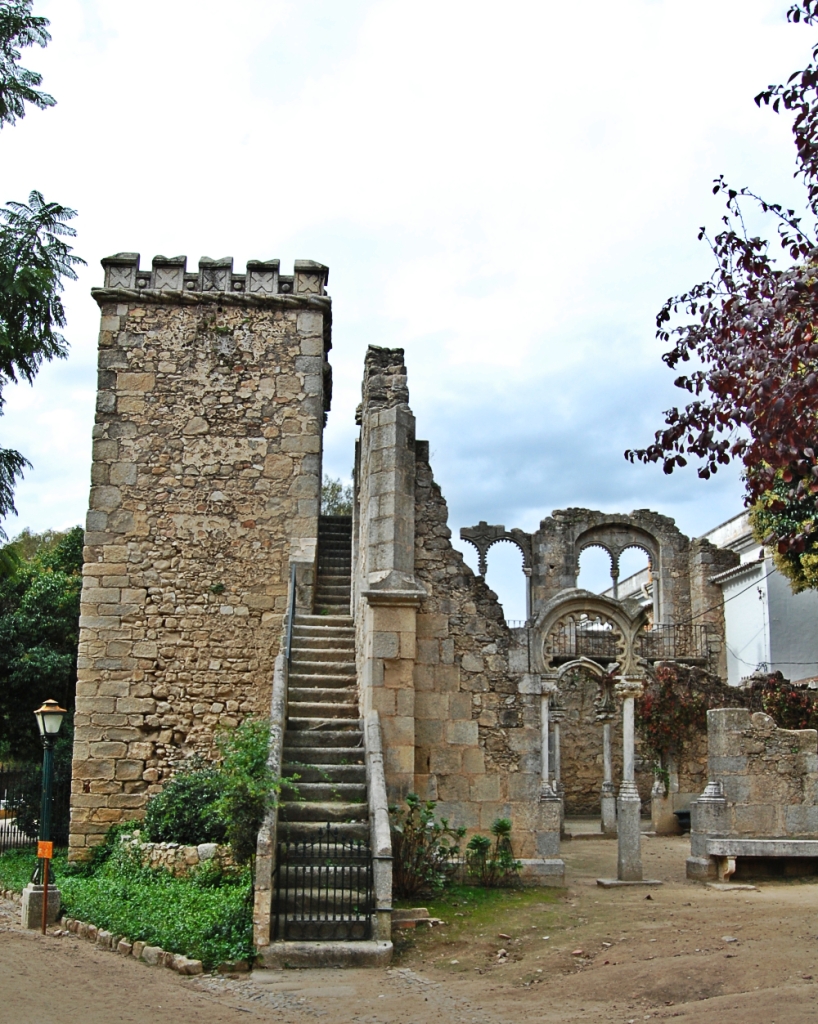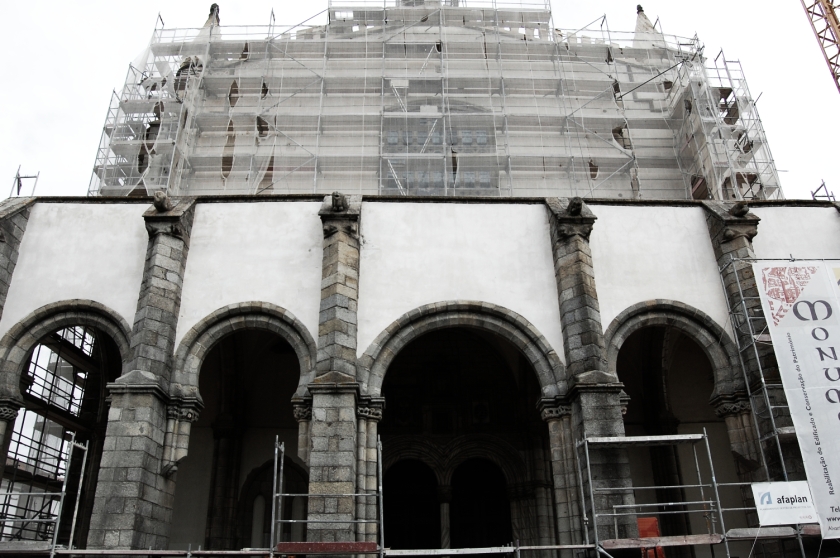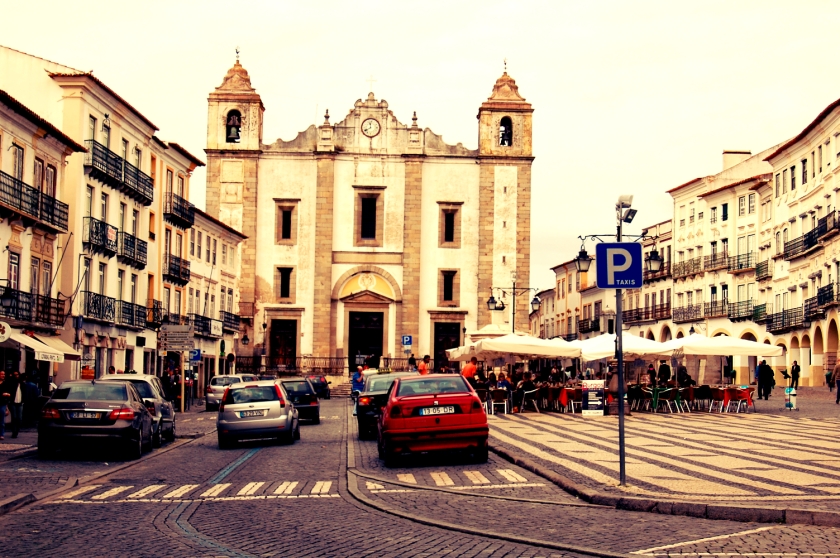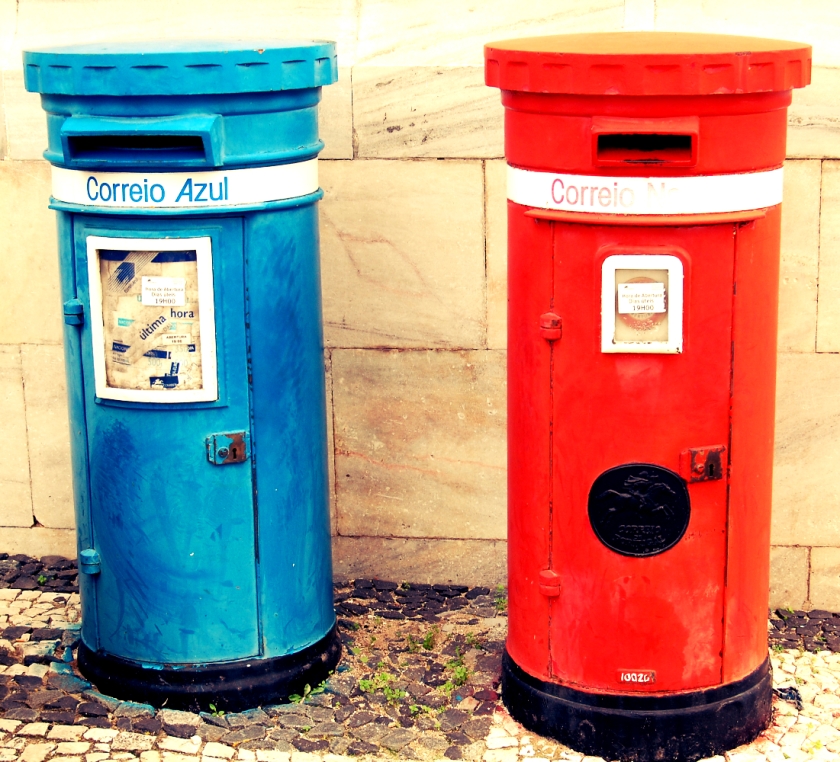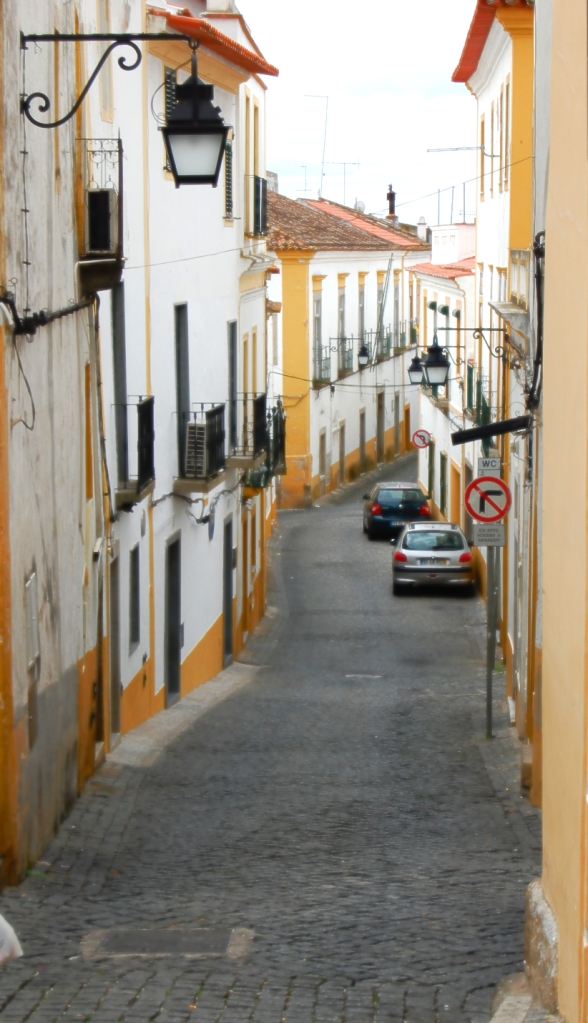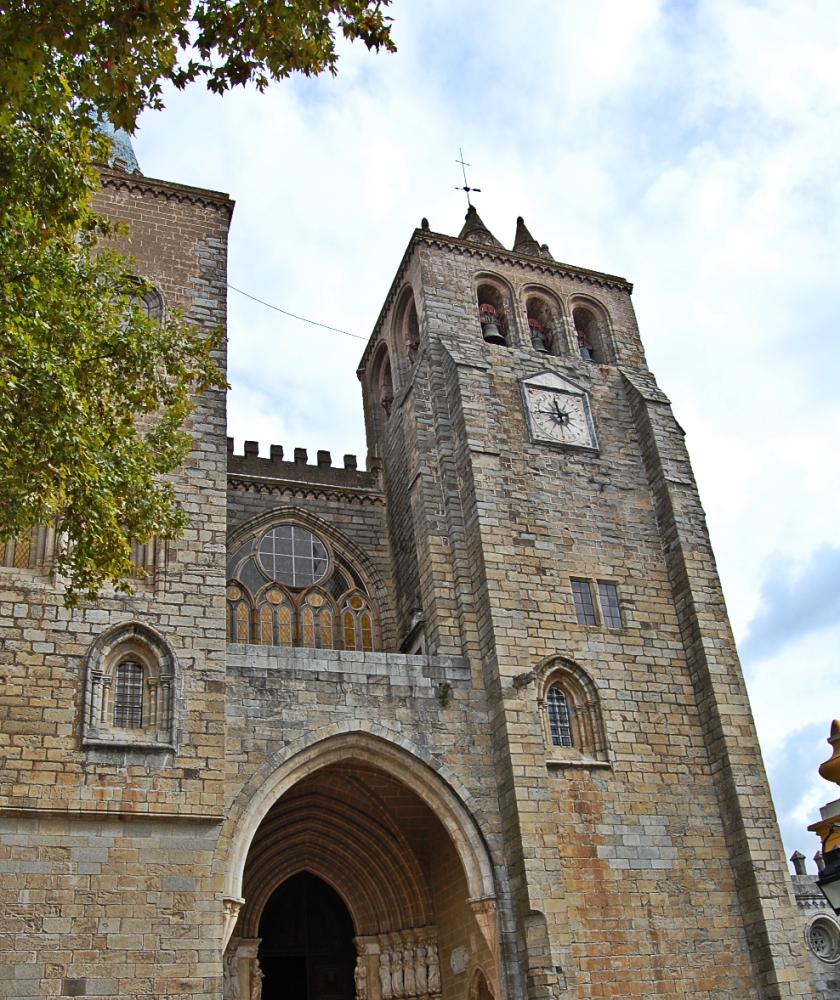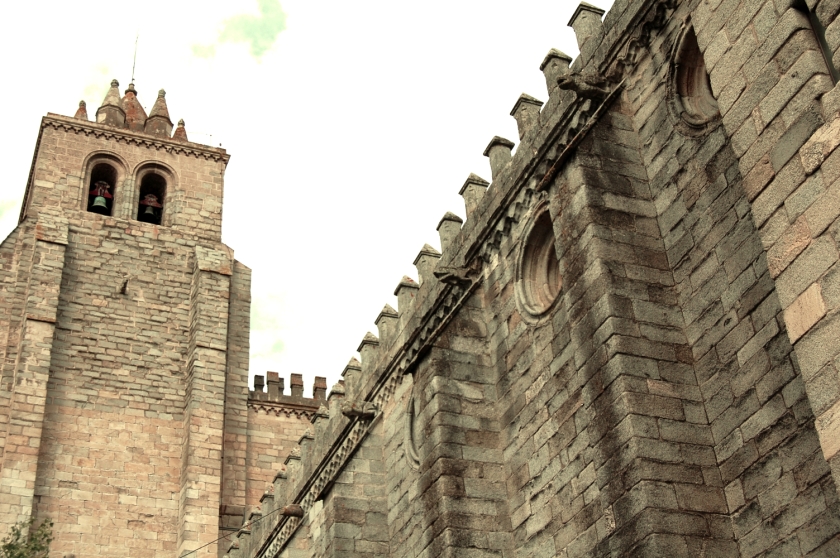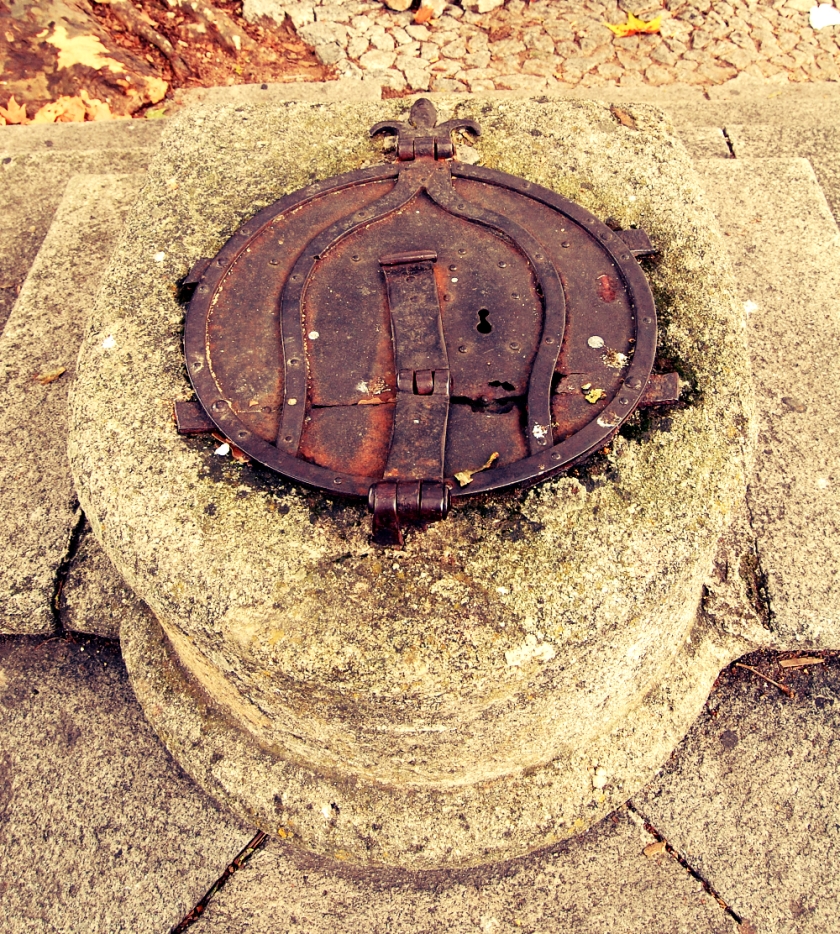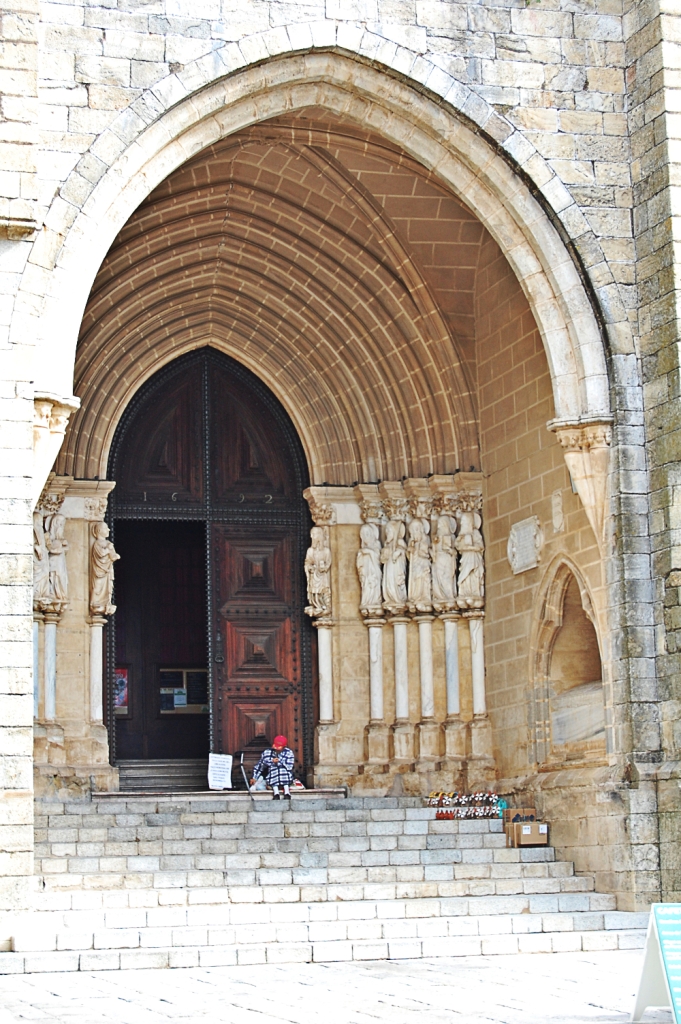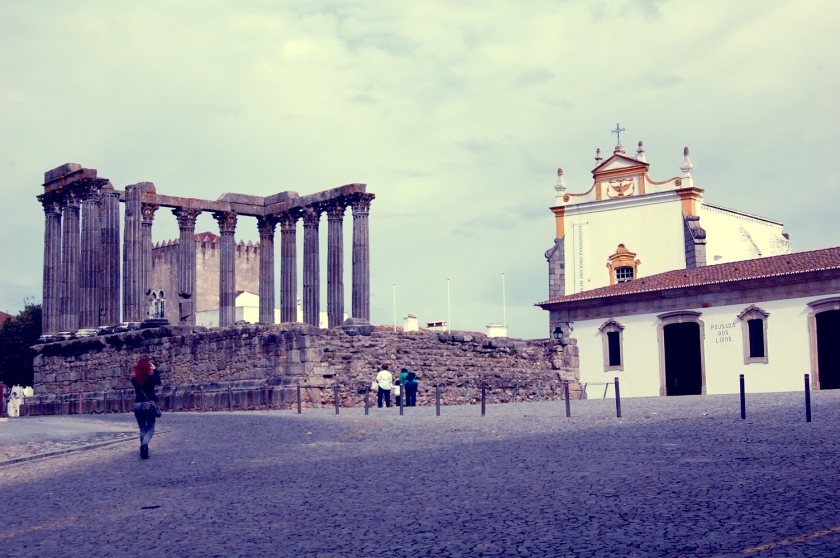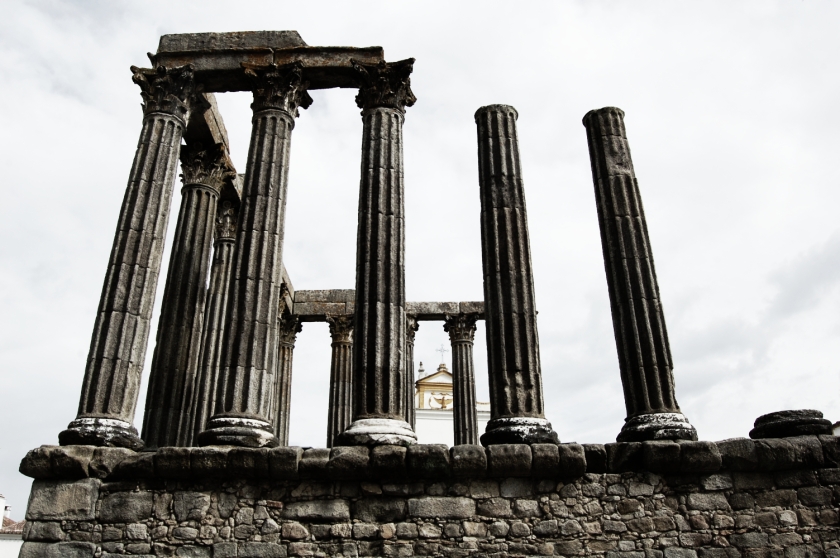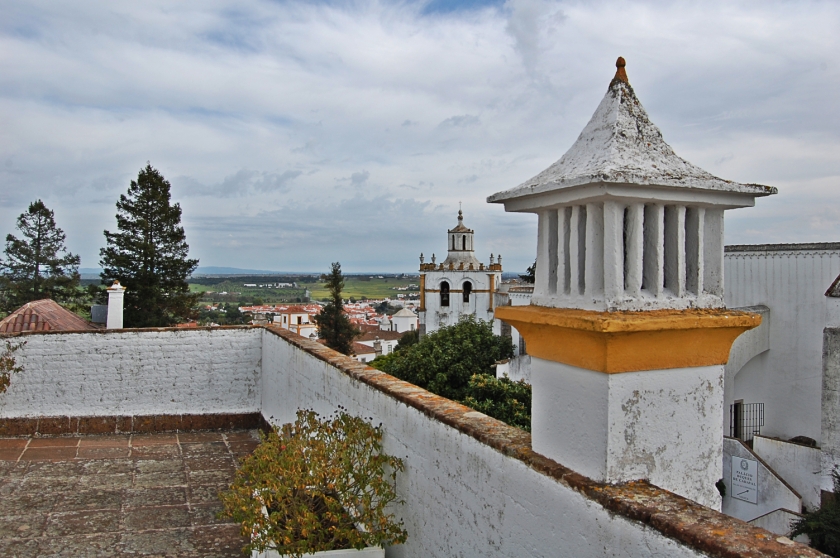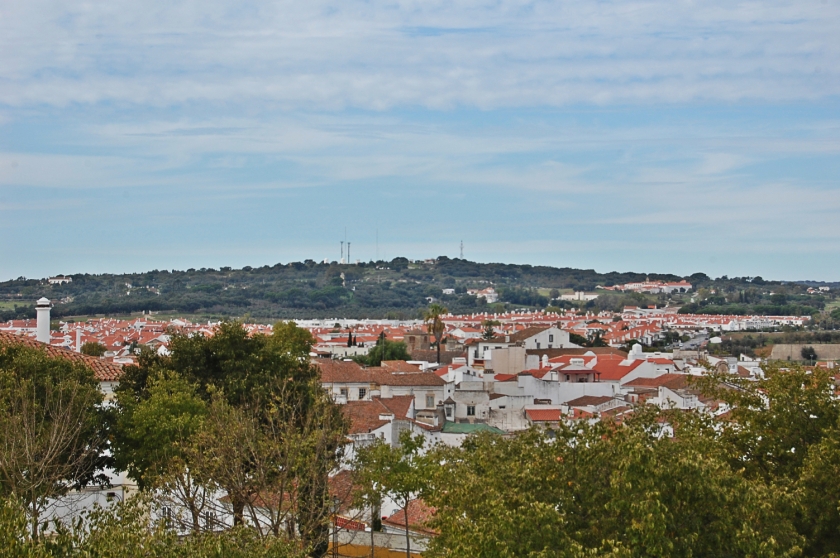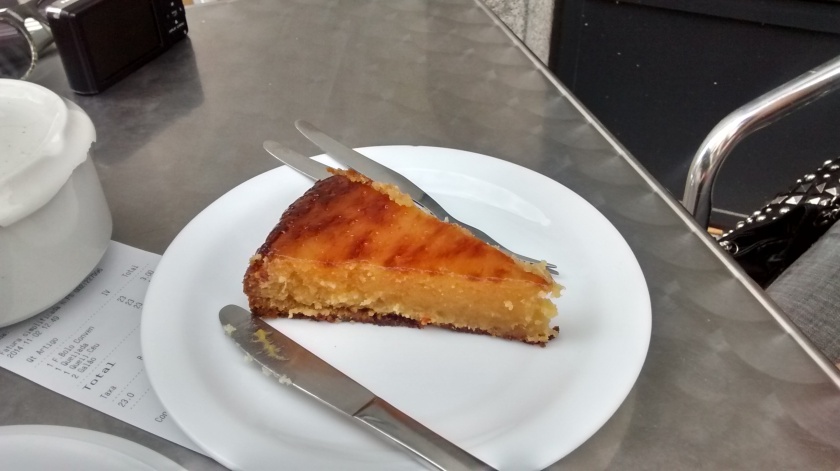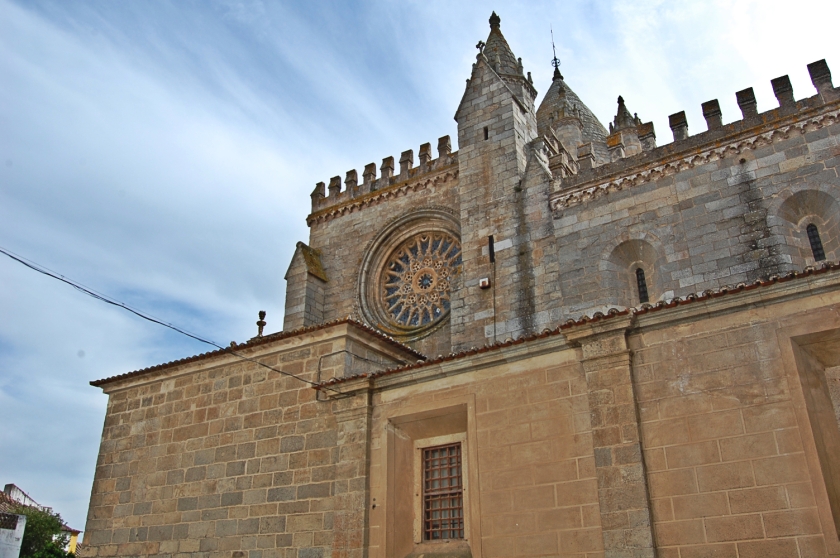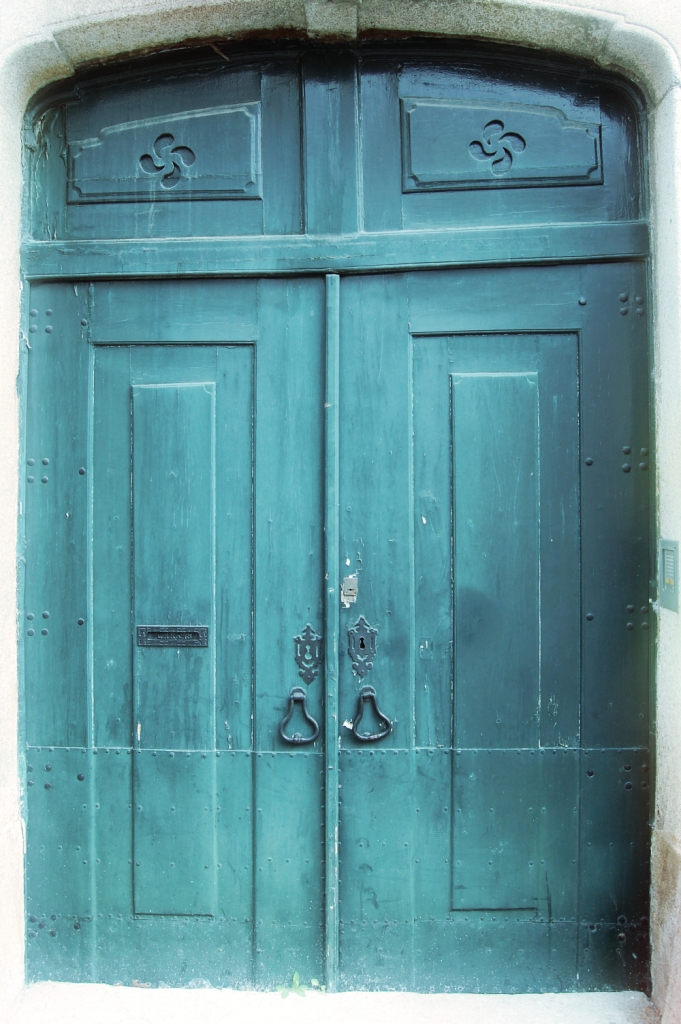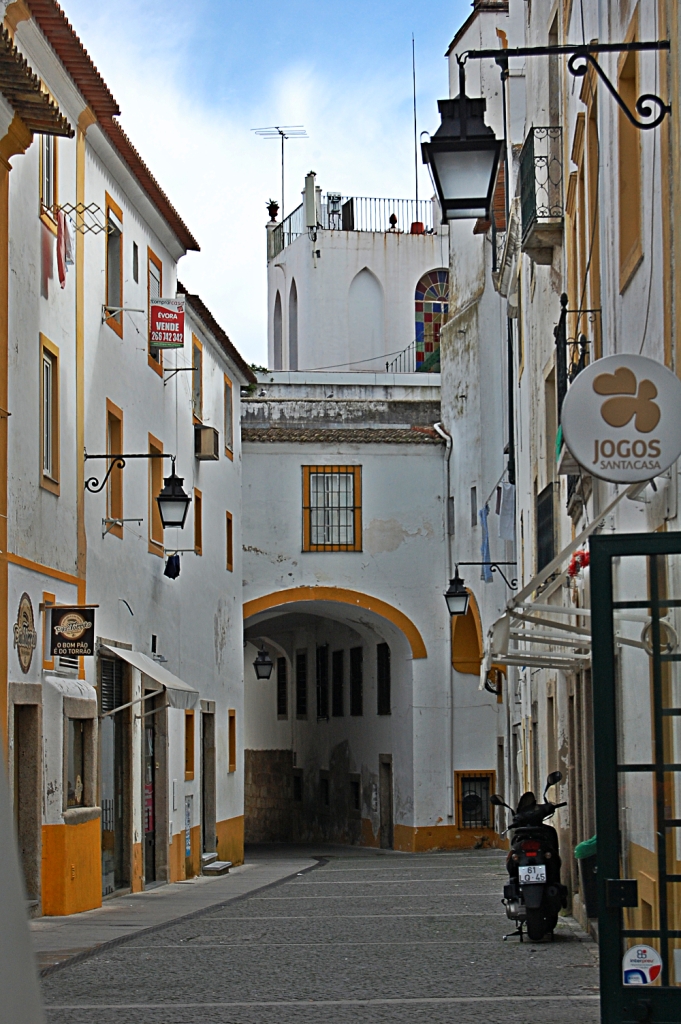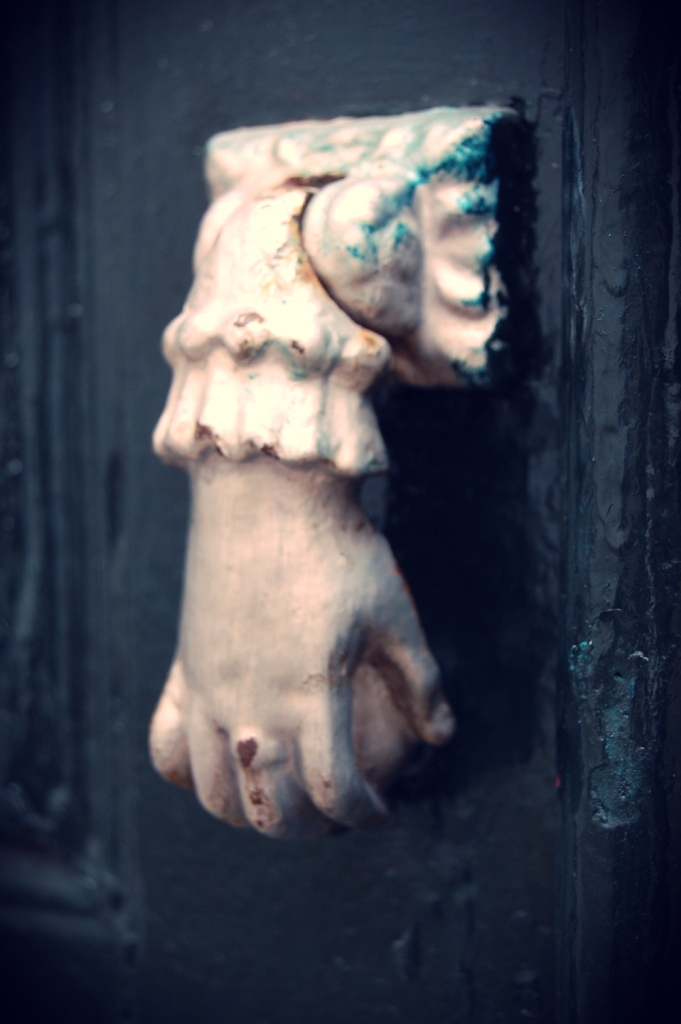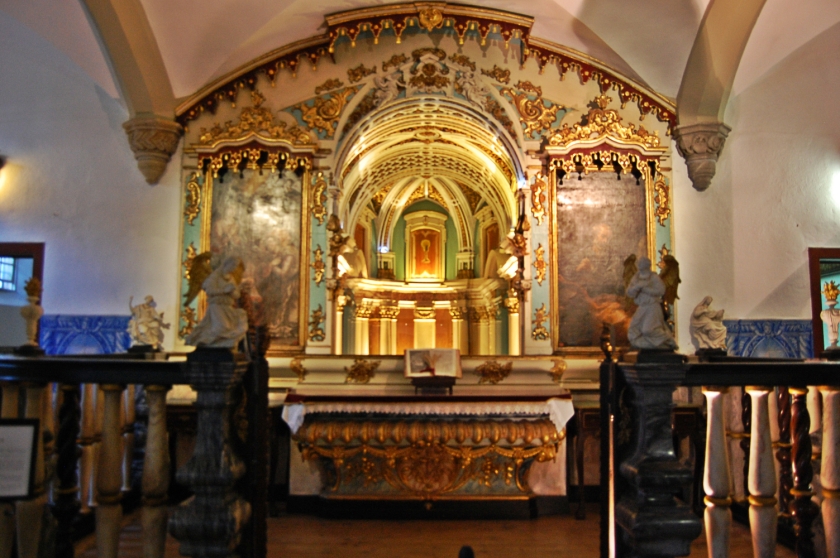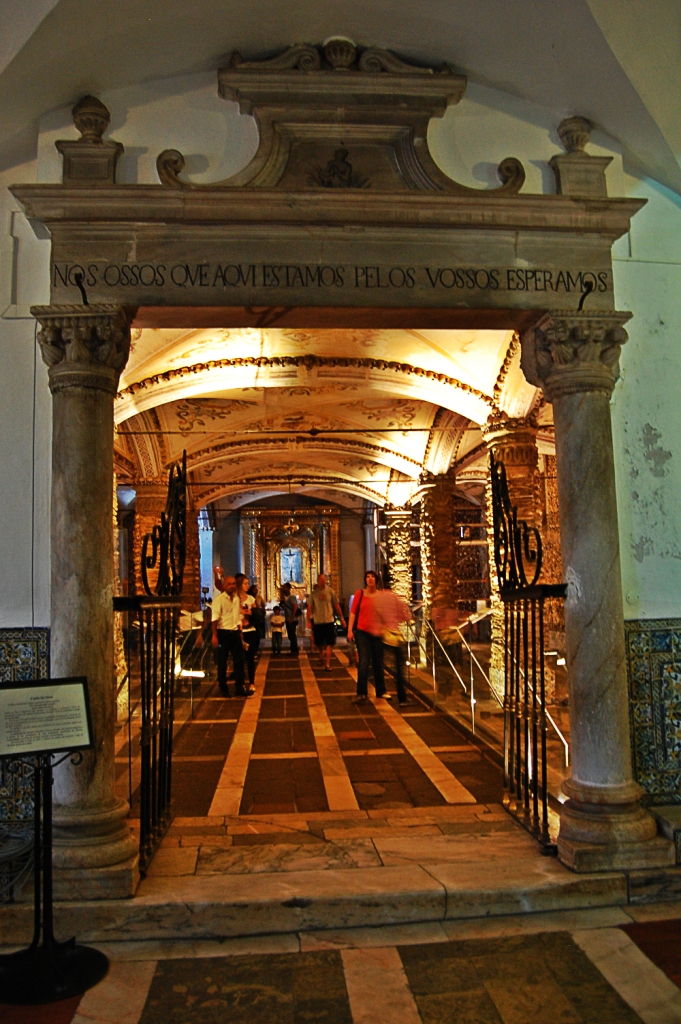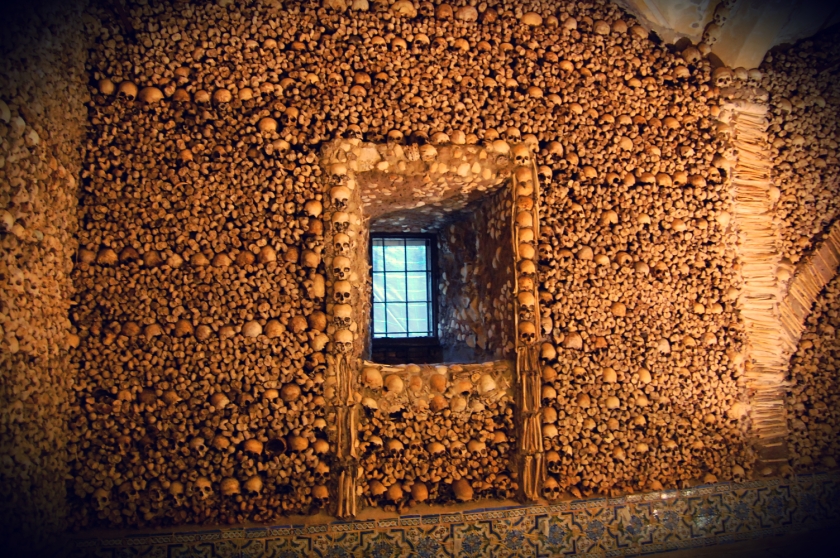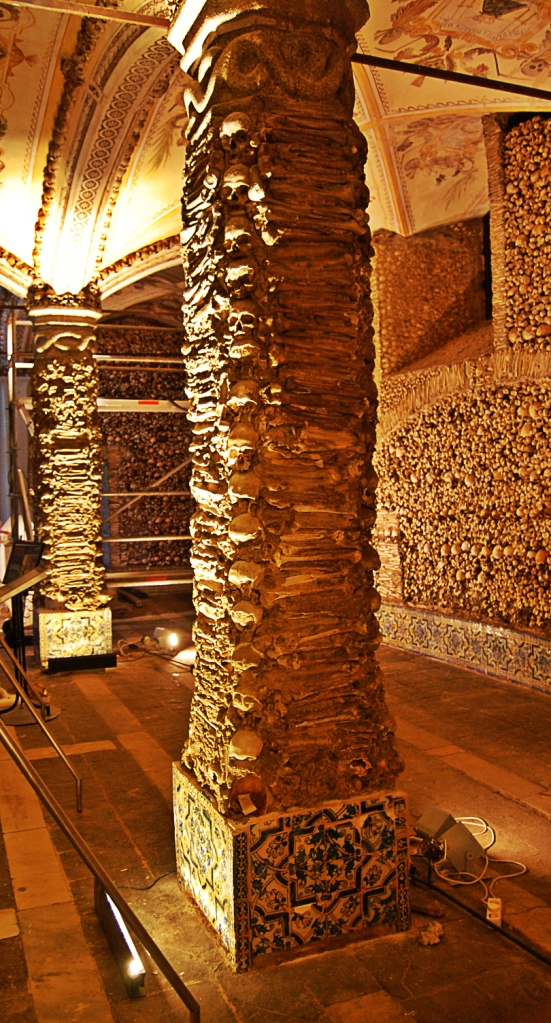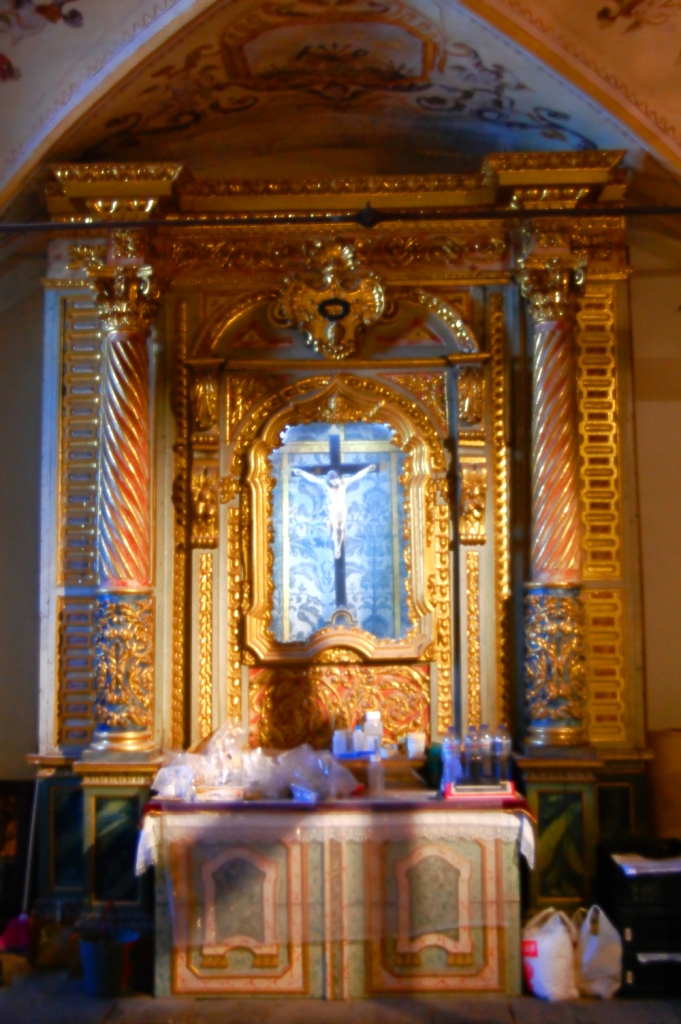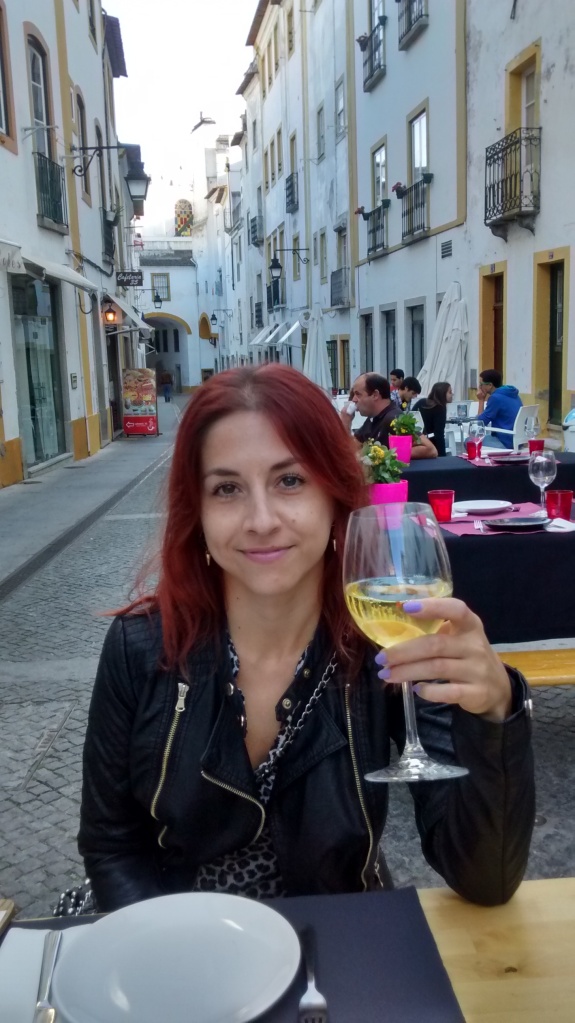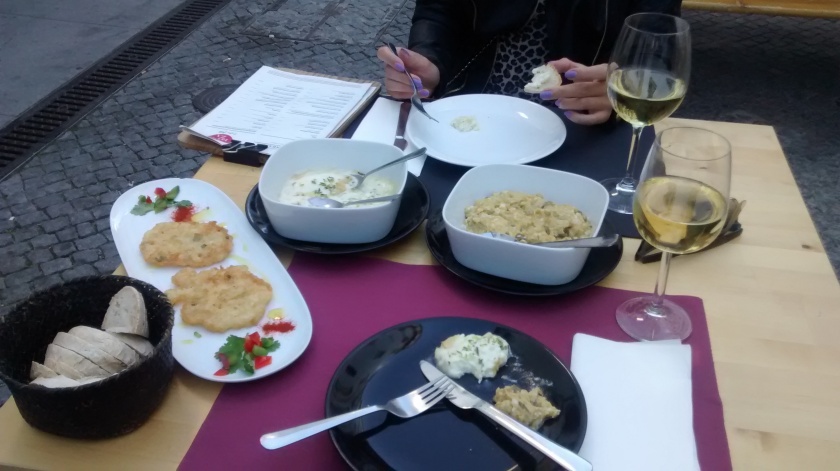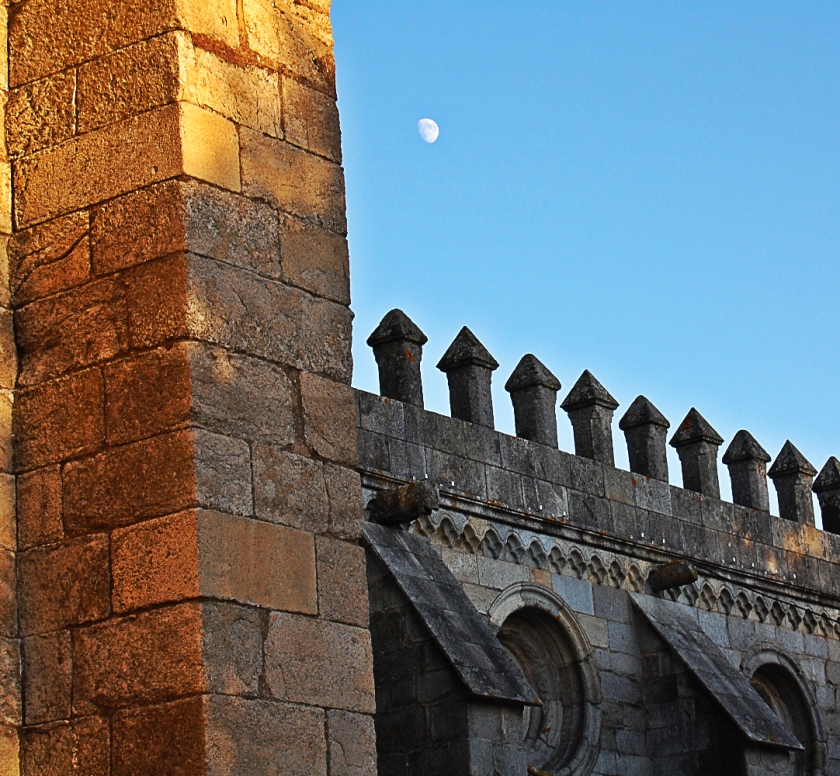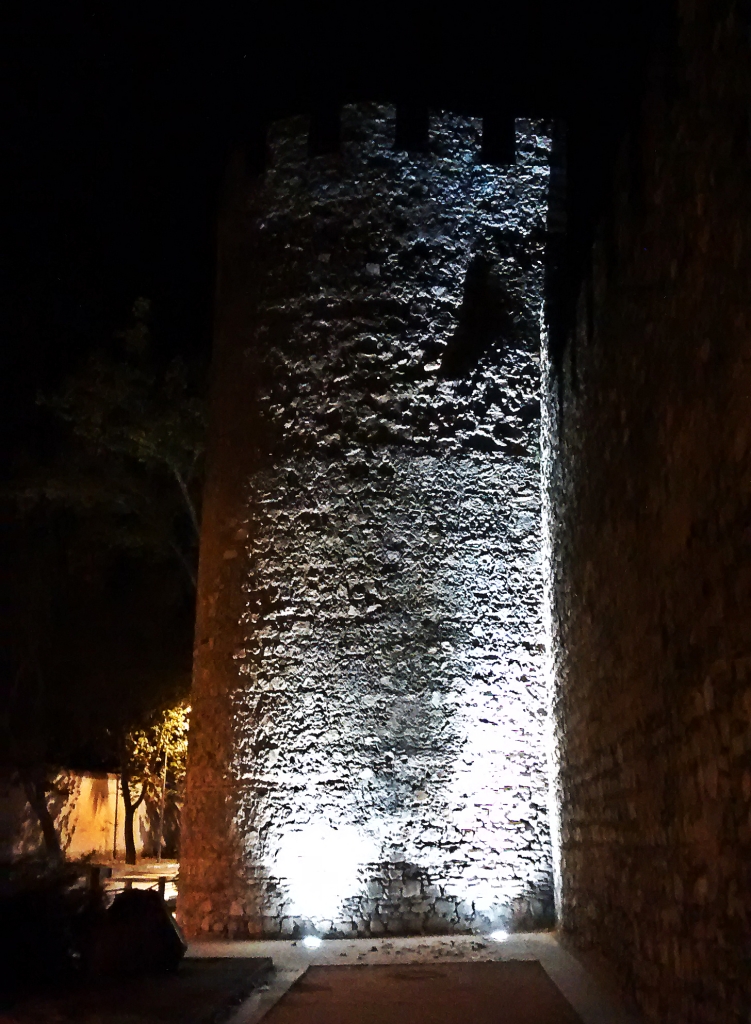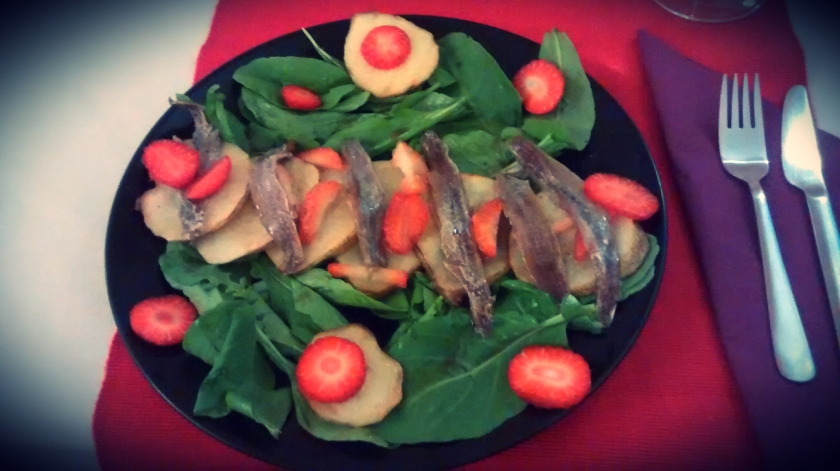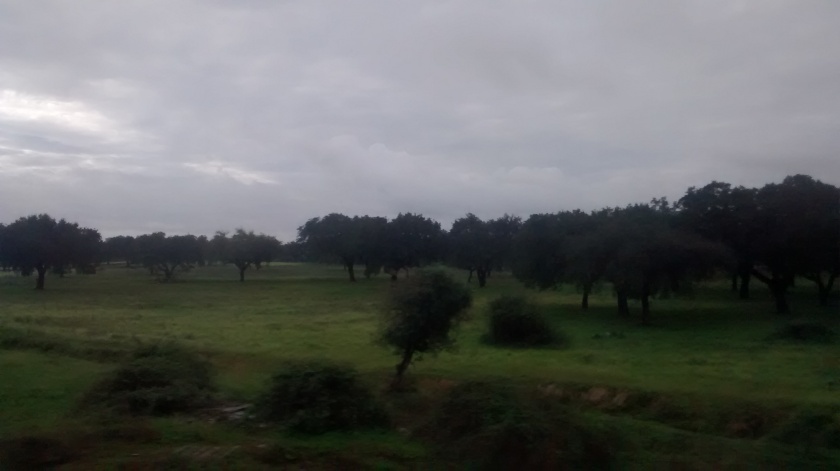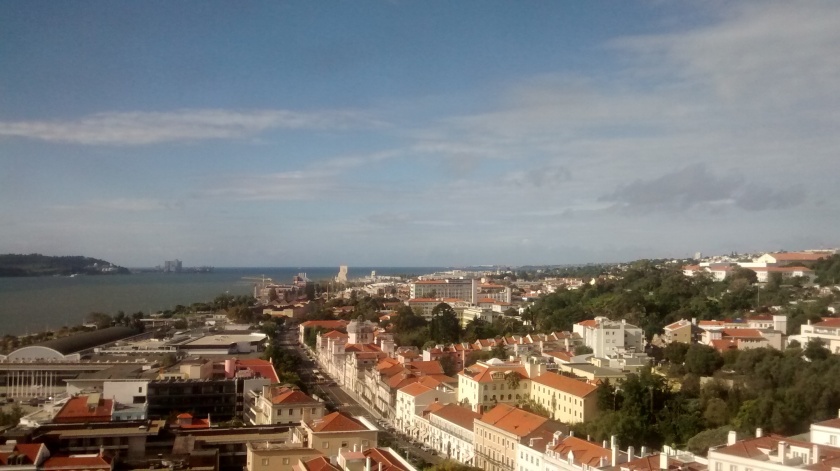Imagine my situation. I’m on holiday from school but my girlfriend isn’t. My friend visits from Poland and she is more or less fanatical about Portugal in general, but especially about seeing new places and castles in particular. So I did the only thing I could do. I went castle hunting.
The question now was where to go, particularly as Portugal has more castles that most people have hot dinners in a six month period. A quick bit of scouting on the internet turned up this article. The trick then was to pick two castles that were sufficiently close together to make a 2 night, 2 castle trip possible. To make things more complicated, I’m not a driver, and we weren’t on the kind of budget to be able to hire a car. So we searched and scoured google maps and various local bus service websites and eventually decided upon Arraiolos and Estremoz. We booked accommodation in Évora, sandwiched between the two, booked return trains there and we were off.
The train ride to Évora is just over an hour and a quarter out of Lisbon. As you head south first, into Setúbal, it has the added bonus of the train cruising over the Tejo river inside the 25th April bridge, providing wonderful views over the river, the wider city and across to the Cristo Rei monument. Booking online with Portuguese railways anything more than a week in advance ensures some crazy prices, in this case, we paid 15 euros return, including a reserved seat (which you can select) in an air conditioned 2nd class carriage. It’s really a bargain.
We jumped on the train early on Tuesday morning and found ourselves in Évora at just before 10:30. We took the short walk in to the old town and our hostel, the Old Évora Hostel. Based within the old city walls, it’s a good place to stay. We’d chosen a twin room with a shared bathroom and, conveniently, the private rooms are located across the road from the dormitories, ensuring peace and quiet when you want to sleep. Breakfast is served in the main hostel building between 8 and 10:30 every day and is decent. The beds were cosy enough, there were abundant bathrooms and a fan is provided in each room – necessary with the Alentejo summer heat. The brother and sister team who run the place are extremely friendly and helpful and, though our room was still being cleaned at such an early hour, we were still able to drop our bags in our room and head back out.
From there we decided to head straight to the bus station, a mere 15 minute walk, just outside the walls of the old city. We arrived and found the ticket office, with the time now around 11:15. We asked about our bus and the assistant confirmed that it was leaving at 12:20 and that we should pay on the bus. So we decided we’d take this opportunity to grab a bite to eat, having not really had much of a breakfast. Opposite the bus station is a classic little Portuguese snack bar. Far from fancy, the owner was a kind enough fellow and he quickly made us a couple of bifanas, which we washed down with a cold coke, with the mercury already rising to over 35 degrees centigrade.

With the snack demolished along with a coffee chaser, we were at the bus stand, with just 10 minutes to go before our bus left. We jumped on board as it arrived, paying a remarkably small EUR 3.05 for what ended up being a 25km journey. The route took us out of Évora, along the line of the city’s ancient aquaduct and between fields of alternating furry Alentejan cows and cork trees, with their distinctive bright under bark and the number emblazoned on the trunk, denoting when they were last harvested. The journey was pretty uneventful, aside from one particularly tight turn in a small village where I was made to feel decidedly glad not to be an Alentejo bus driver. After what seemed like miles of the same countryside, we suddenly spotted the walls of the castle and the keep at the top of a hill. We got ever closer until we pulled off the main road and the bus driver let us off in the middle of the small town. After a short stop at a Mini Preco market to buy extra water, we set off through the town, and finally between two beds of brightly flowering cacti up towards the castle on the hill top.
Once at the castle itself, we first took a look around the keep, which is largely ruined. Still, it remains mighty impressive, and has helpful plaques telling you when the different parts were constructed and by whom. The city was founded at the very beginning of the 13th century and gained some renown for its tapestries and carpet weaving (more on that later). The castle was constructed in its current shape and size around a hundred years later, and extended throughout the 14th century.
The real reason people come to see the castle at Arraiolos though, is not for the keep. The real reason is the wall and the church. The wall is more or less 100% intact, including an impressive gate tower. Walking around the perimeter and looking out over what I’m not ashamed to admit is my favourite area of Portugal is quite magical. Standing between the battlements and getting an idea of just how far you can see and just how far down the surrounding lands are, you get a real sense of the imposing defensive position this must once have been. It also helps you to understand how it remains in such good condition so much later. The second item of interest is the church. A classic whitewashed building, it’s quite large, despite its dwarfed look in the middle of the sprawling castle walls. It’s still in use and kept in very good condition. The vaulted ceilings are beautifully kept, in particular. Some children who were doing some work in the church, manning the souvenir stalls in their school holidays were very helpful and keen to show off their English to us obvious foreigners. They sold me yet more cold water and my friend picked upa fridge magnet of locally produced, handmade Arraiolos carpet work. Quite a unique souvenir.
We spent a full hour wandering around the walls, taking in the views and occasionally diving for the cover of the one tree, when the sun got too hot for us. After that it was back down through the town. As on the way up, the streets were more or less silent, locals far too smart to be out wandering around in such bright, hot midday sun. But our stomachs were rumbling, lunch was needed. I noticed on the way down that their bottle banks are all individually painted with colourful flower patterns. A lovely touch.

As we were heading back in to the town, we recalled that we had passed a café that looked intriguing. It turned out to be a good bet as, even though the kitchen was all but closed, we were able to order the traveller’s friend in the form of the tosta mista. They also had some delightful, chilled local white wine. As we were ordering, I also noticed that they sold homemade jams, made of local fruit and helped myself to a jar of fig jam. All that, with 2 coffees added came to all of about 20 euros, and was delivered with genuinely great service from the staff. If you find yourself in Arraiolos and in need of a snack, you really should take yourself off to Teresa Alves.

With lunch sating our appetites (my friend actually had to take two chunks of her sandwich for the road), we decided that, with more than an hour to go until our bus, we’d have a bit of an explore. We wandered through the old town and saw that some of it is a little run down, outside of the centre. Even that, though, lent the place a kind of rustic beauty. I’m not sure the occupants of the buildings would agree on winter nights, but it made for some interesting scenery. After we ran out of town (quite quickly, in fact!) we decided to keep walking along the country road. Without any pavement we made sure to make ourselves visible to the oncoming traffic and, just as I was beginning to think it had been a bad idea, we came across one of the many drinking fountains for travellers installed by the Portuguese royal family. Still with running water (I have to say I didn’t drink any), these things really are magnificent and you will find them all over Portugal, particularly on roads between historically important cities. They were installed to make traversing the country in the searing heat of summer a little more bearable for travellers and their horses.
We followed the meandering road back around to the town centre and stopped for a cold drink under the shade of some trees in the park, near the bus station until time to travel. The journey back, with tired legs and a different route, had a real glow about it. The afternoon sun setting behind the trees, birds of prey gliding over the fields and, at one point, a field of sunflowers that seemed to go on forever.
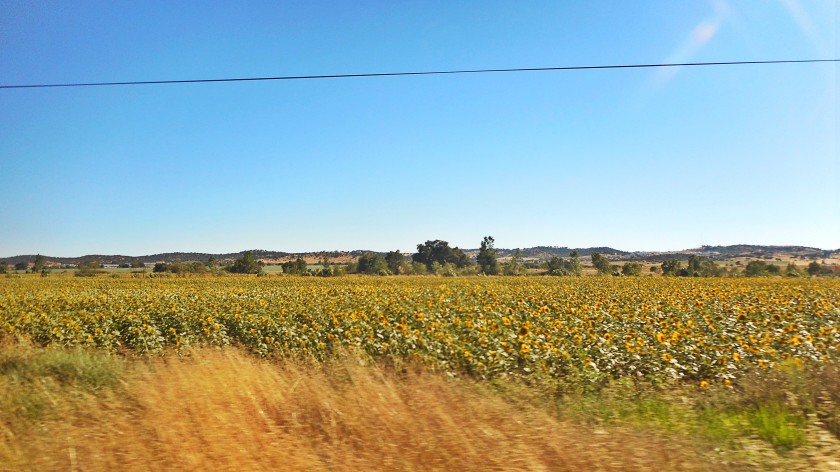
Arriving back to Évora in the late afternoon allowed us a little time to relax in our hostel room before heading back out for a walk around the city and a bite to eat. I’ve already covered much of what there is to do in Évora in a different post, but here are a few pics.
Once dinner was done with though, we decided that it was time for bed. We anticipated (quite rightly) that the next day in Estremoz would involve a lot more walking. So it was back to the hostel and alarms were set for 8am. Then it was off to sleep.
If you’re planning your own trip to the Alentejo region, take a look at the Rough Guide to the area for Kindle, here:























